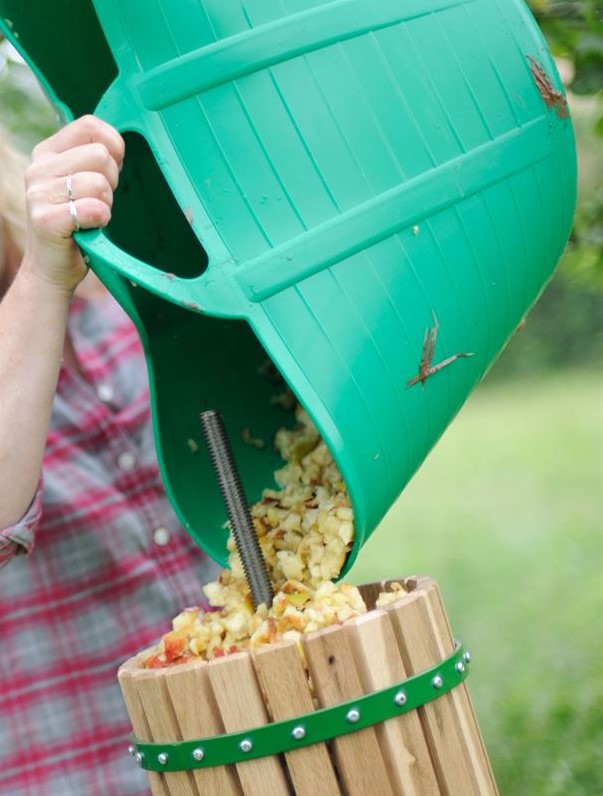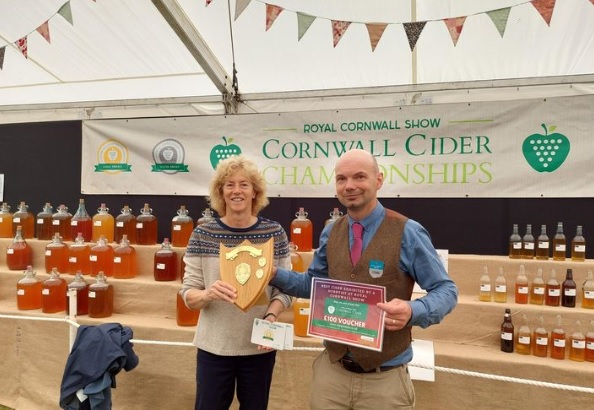Prepare for Cider Making Season with Vigo Presses' Complete Starter Kit!

As cider making season approaches, it's time to gear up and get ready to create your own delicious homemade cider. Whether you're a seasoned cider enthusiast or a complete beginner, proper preparation is key to ensure a successful and enjoyable cider making experience. Vigo Presses' Complete Starter Kit is here to make your journey into cider making a breeze. This all-in-one kit provides you with the necessary equipment and resources, including the 12 litre Hobby Press, steriliser sachets, and ‘how to’ guides, to kickstart your cider making adventure. Let's delve into the essential steps to prepare for cider season and explore how this kit can help you get started!
Clean and Organise:
Before diving into cider making, it's crucial to have a clean and organised workspace. Clear out any clutter and ensure that your equipment is easily accessible. The Complete Starter Kit includes steriliser sachets, allowing you to thoroughly clean and sanitise your equipment, ensuring a pristine environment for fermentation.
Source Fresh Apples or Juice:
The heart and soul of any cider is the fruit it's made from. Seek out local orchards or farmers' markets to find the freshest apples available for pressing. Alternatively, you can use your own apples to kickstart your cider making process. The Hobby Press included in the kit is designed to efficiently extract the juice from apples, ensuring maximum flavour and yield.
Understand the Process:
For beginners, familiarising yourself with the cider making process is essential. Vigo Presses provides a basic juice and cider making booklet and the ‘Craft Cider Making’ book by Andrew Lea, which offers step-by-step instructions to guide you through the process. From crushing the fruit to fermentation and bottling, this booklet will equip you with the knowledge needed to create your own delicious cider.
Experiment with Flavour Profiles:
Cider making allows for endless possibilities when it comes to flavour profiles. Take advantage of the season by experimenting with different apple varieties or adding unique cultured yeasts to create your signature blend. Vigo Presses' Complete Starter Kit provides you with the necessary tools to get creative and craft your perfect cider.
Upgrade and Expand:
As your passion for cider making grows, so might your desire to increase your production capacity. The Hobby Press included in the Complete Starter Kit is just the beginning of your cider making journey. Vigo Presses offers a 10% discount on larger and cast iron presses within 2 years of your initial purchase, allowing you to scale up your cider production and explore new possibilities!
With cider making season around the corner, it's time to get prepared and embark on an exciting journey of crafting your own delicious cider. Vigo Presses' Complete Starter Kit provides the perfect foundation for beginners, offering essential equipment and resources to kickstart your cider making adventure. From sterilisation sachets for proper cleaning to understanding the process and experimenting with flavours, this kit has you covered. Embrace the joy of cider making and savour the fruits of your labour during the upcoming cider season. Cheers to a fruitful and satisfying cider making season approaching!
Buy your Complete Starter Kit here: https://vigopresses.co.uk/cider-making-kit-with-12-litre-hobby-press/
2022 Cornwall Cider Championships
The annual Cornwall Cider Championships, held at the Royal Cornwall Show, saw a great turnout this year and it was wonderful to see so many fantastic ciders on display from both hobbyists and professionals alike. Our sister company, Courtney's Drinks, were extremely pleased to scoop up a handful of prizes in a hugely competitive show!
At Vigo Presses, we're proud to have sponsored the 'Best Cider Exhibited by a Hobbyist' category, and would like to extend our best wishes and congratulations to the winner, Maxine Millichip. Maxine won a £100 prize voucher with us and we're looking forward to hearing from her about what she'd like to spend it on! Maxine is shown below collecting her prize from Tom Bray:

A huge well done to all of the competitors that entered, and we look forward to seeing you all soon!
